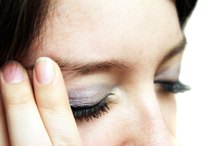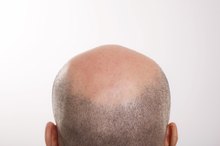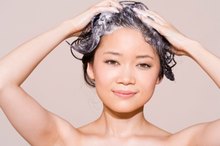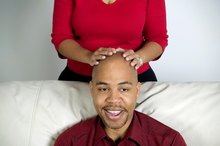What does fact checked mean?
At Healthfully, we strive to deliver objective content that is accurate and up-to-date. Our team periodically reviews articles in order to ensure content quality. The sources cited below consist of evidence from peer-reviewed journals, prominent medical organizations, academic associations, and government data.
The information contained on this site is for informational purposes only, and should not be used as a substitute for the advice of a professional health care provider. Please check with the appropriate physician regarding health questions and concerns. Although we strive to deliver accurate and up-to-date information, no guarantee to that effect is made.
How to Treat Ingrown Hairs on the Scalp
If you shave your head, you may experience ingrown hairs as a result 2. Once a hair is shaved, its tip becomes sharp. As the hair grows out, it may curve toward the scalp and pierce the skin. Your body then treats the hair like a foreign object and the area becomes red and inflamed. The bump over the ingrown hair may hurt and itch 2.
Grow your hair out. If you must keep it short, use barber clippers or scissors to trim it instead of shaving it with a razor. The University of Mississippi Health Care recommends keeping your short hair at a length of 1/8 to 1/4 inch.
How to Dislodge Deep Ingrown Underarm Hair
Learn More
Avoid wearing hats or anything else on your head. Sweat and objects rubbing against the ingrown hair bump will irritate it and prevent the ingrown hair from healing quickly 2.
Shampoo your hair daily to remove dead skin cells and keep your scalp clean. Even if you don’t have hair, wash your scalp daily. While you are shampooing, rub your scalp with a toothbrush or rough washcloth to try to tease the ingrown hair out of the skin.
How to Stop Ingrown Eyebrow Hairs
Learn More
Place a hot compress on your scalp for 15 minutes three times per day. Hot compresses will help the bumps to drain.
Apply hydrocortisone cream to the bumps two to three times per day. Be sure to rub it in well so it doesn’t dry on your hair and leave a white film. The hydrocortisone cream reduces inflammation and helps control itching.
Resist the urge to pick at the ingrown hair, since you can’t easily see it. Hyperpigmentation and scarring can result from trying to dig out a deeply ingrown or embedded hair 2.
Tips
If the ingrown hairs don’t respond to self-treatment, contact a dermatologist to determine if you need prescription medications. Some ingrown hairs may need to be treated with antibiotics, corticosteroids or retinoids.
Related Articles
References
- MedlinePlus: Folliculitis
- Epigee: Hair and Ingrown Hairs
- MedlinePlus. Acne.
- Cleveland Clinic. Ingrown hair. Updated February 28, 2018.
- Merck Manuals. Ingrown beard hairs. Updated October 2019.
- Cleveland Clinic. Ingrown hair: Management and treatment. Updated February 28, 2018.
- Ogunbiyi A. Pseudofolliculitis barbae; current treatment options. Clin Cosmet Investig Dermatol. 2019;12:241-247. doi:10.2147/CCID.S149250
- MedlinePlus. Folliculitis. Updated October 8, 2018.
- Zaenglein AL, Pathy AL, Schlosser BJ, Alikhan A, Baldwin HE, et. al. Guidelines of care for the management of acne vulgaris. Journal of the American Academy of Dermatology. 2016; 74(5): 945-73. doi:10.1016/j.jaad.2015.12.037
Writer Bio
Casey Holley is a medical writer who began working in the health and fitness industries in 1995, while still in high school. She has worked as a nutrition consultant and has written numerous health and wellness articles for various online publications. She has also served in the Navy and is pursuing a Bachelor of Science in health administration from the University of Phoenix.








